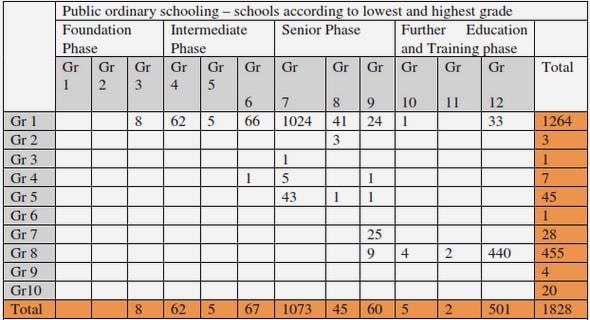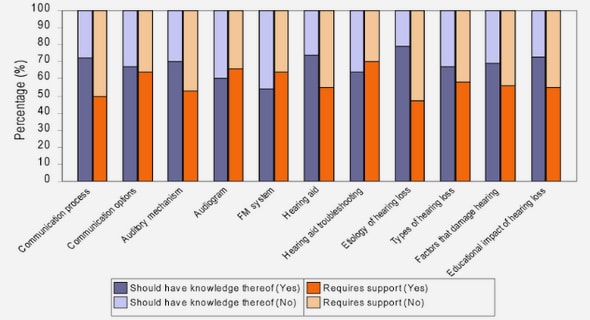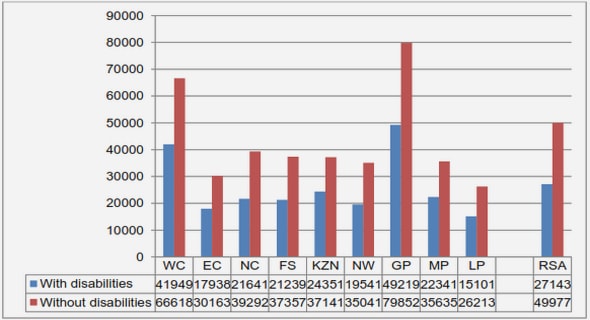Get Complete Project Material File(s) Now! »
Typical characteristics of a municipal WWTP
WWTPs, as any real life systems, have many specificities which have to be considered before choosing an optimization technique. These particularities are detailed in this section, first considering the characteristics of the influent going into our system and causing major disturbances. Typical processes encountered in WWTPs to treat this influent are then presented.
Influent characteristics
Wastewater is the collection of all reject waters from households and small industries not equipped with their own treatment plant. It is composed of many pollutants. The three main ones that can be treated in conventional processes are organic carbon, nitrogen and phosphorus. Nitrogen and phosphorus are responsible for ecosystem eutrophication by favoring the algae development. This eutrophication may indeed lead to the destruction of the ecosystem by reducing incoming solar flux and decrease of oxygen concentrations.
This wastewater pollution is usually referred to in terms of chemical oxygen demand (COD), total suspended solids (TSS), total nitrogen (TN or NGL), Total Kjeldahl Nitrogen (TKN), ammonia (SNH) and phosphorus (SPO4). Chemical oxygen demand is a measurement of the quantity of oxygen required to oxidize all organic pollutants. It is a widely accepted measurement of organic carbon pollution. The concentration of total suspended solids represents the amount of particulate compounds. Total nitrogen is the total mass of nitrogen for all kind of molecules while the Kjeldahl measurement does not take nitrate and nitrite (oxidized nitrogen forms) into account.
The most important characteristic of wastewater is that it is strongly influenced by daily and weekly variations induced by human activity. Long-term modifications also occur. They may be seasonal events like holidays or long-term demographic changes (both inducing either an increase or decrease in the population).
Typical variations in the influent flow rate at the inlet of the wastewater treatment plant are illustrated in Figure 2.1 (the flow rate corresponds to typical daily production per inhabitant in the absence of industry, obtained with the influent generator of Gernaey et al., 2006b).
Main models of WWTPs
The main processes of the secondary treatment will now be detailed in this section. Optimization of primary treatment and final filtration and disinfection of water is not considered in this thesis and they will hence be omitted.
Activated sludge units
The activated sludge process was discovered in 1913 in the United-Kingdom with experiments on the treatment of wastewater in a draw-and-fill reactor. First, wastewater was filled into a reactor and oxygen was supplied. Pollution was hence removed from the water. Then, a phase of settling was performed. Finally, clean water was removed and sludge was kept in the reactor. These actions were repeated many times. The experiments showed that the water quality was enhanced cycle after cycle. Scientists first thought that the sludge was activated (in a manner similar to activated carbon) and the process was therefore named the activated sludge process. The name of the process remained even after it was realized that there was no activation of the sludge but a concentration of bacteria and a selection of the best-performing organisms.
Main models of WWTPs
Three main pollutant removal processes occur in an activated sludge process: oxidation of organic compounds with oxygen as electron acceptor, transformation of ammonia into nitrate (also named nitrification) and oxidation of organic compounds with nitrate as electron acceptor, occurring when no more oxygen is available as electron acceptor (also named denitrification as it includes the transformation of nitrate into gaseous nitrogen).
The first two processes require the presence of oxygen while the last one requires its absence. This is the main reason why activated sludge units are usually intermittently aerated. Recent advances tend to promote advanced control laws that could lead to simultaneous reactions by providing the exact amount of oxygen required (Olsson et al., 2005; Lemoine and Grelier, 2008, Thauré et al., 2008). Details of these control laws are given in section 2.3.
Over the last twenty years, four dynamic models for activated sludge processes have been published by the IWA (International Water Association), formerly IAWQ (International Association on Water Quality). These models are known in the literature as the ASM models (i.e. activated sludge models ASM1, ASM2, ASM2d and ASM3). They are summarized in a report of the IWA by Henze et al. (2000). They are now the models most widely used to represent the behavior of activated sludge processes, even if many minor deviations have been proposed in the literature.
All four models are based on the same principle of description. They are macroscopic models considering the bacteria consortium in its whole, and even if individual cells have different characteristics, only their mean characteristics are considered. The functioning of the activated sludge tank is described through a fractionation of the mixed liquor (activated sludge and wastewater) into different compounds (substrates, particulates compounds and organisms) and through a number of processes which describe the transfers between the different compounds/organisms, based on mass conservation equations. The reaction rates of these different processes depend on the concentration of compounds/organisms in the mixed liquor by means of Monod activation terms.
Dimensionnal Layered Flux Models
1-Dimensionnal layered models are based on discretization of the settler in a set of horizontal layers. In each layer, the concentration of sludge is assumed to be constant and only the transfers between the layers is described. The theory of the limiting flux is used in these models. Two fluxes therefore cause the sludge concentration to change (see Figure 2.4). First, a settling flux represents the settling of the sludge using the hindered solids settling velocity of the limiting flux theory. Second, a transport flux (or advection flux) takes into account the water velocity across layers. Many models are available in this area and the review of Grijspeerdt et al. (1995) showed that the one of Takács et al. (1991) is the most reliable for dynamic simulations of secondary settlers.
The Oxidation-Reduction Potential
The oxidation-reduction potential (ORP) is often used as a measurement of the state of the activated sludge (Meijer, 2004). It represents the ability of water compounds to accept or donate electrons. Its measurement is based on the use of two half-cells (electrode + aqueous solution), one having precise characteristics, used as a reference, the other one being unknown. In activated sludge treatments, one half-cell is the activated sludge mixed liquor. Platinum is typically used as an electrode in such case in order to ensure reliable measurements for continuous operation of the sensor in the activated sludge, which is an aggressive environment. The other half-cell is usually the reference couple H+/H2.
The theory of ORP measurements is clearly defined for aqueous systems with two species: the ORP is the result of the two half reactions of oxidation and reduction occurring. Considering a half-equation for a single couple (or half-cell) RedyenOxx⋅↔⋅+⋅− (II.2).
The Nernst equation describes the potential corresponding to this couple: redoxAAnFTREEln0⋅⋅+= (II.3) where E is the half-cell potential, E0 is the standard potential when both concentrations are at their equilibrium, n is the number of electrons exchanged, R is the universal gas constant (8,314472 J.mol-1.K-1), T is the absolute temperature (in K), F is the Faraday constant (96485 C.mol-1) and Aox and Ared are the activities of the relevant chemical species. For perfect solutions at low concentrations, the activities tend to equal the concentrations of the species.
Aeration control strategies for WWTP activated sludge units
The main operation that needs precise and dynamic control in a WWTP is the aeration of the activated sludge unit(s). This is due to the two reactions of nitrification and denitrification that typically occur in the same tank, but the first one needs oxygen (aerobic conditions) while the second one needs its absence (anoxic or anaerobic conditions). Depending on the plant layout, treatment objectives and instrumentation available, different types of controller can be used. The main control laws used in WWTPs will be presented in the following sections.
Simple control based on time
The simplest way to control the aeration is based on time. Aeration phases are defined based on a daily timetable. Additional timetables are typically used for weekends and for periods of high or low loads (holidays, etc.). This kind of control is robust since no specific control law nor instrumentation is required but it is not robust in terms of performance, as no measurement of the real incoming load and process state is performed.
Such a system is applied on old extensive processes. In these WWTPs, the water residence time in the activated sludge units is long, usually close to 24 hours. This induces small impact of the inlet variation on the concentrations in the activated sludge units. When changes occur, they are slow and the control can be adapted by operators on a daily basis. This control is therefore also reliable in term of performance on these extensive processes.
Aeration control strategies for WWTP activated sludge units
Such a system does not need a high level of expertise for the plant manager who merely needs to adjust the timetable according to the variation of the water quality daily measured in the outlet for the self-control procedure of WWTPs.
Table of contents :
Chapter 1 – Introduction
1.1 Purpose
1.2 Challenges and solutions already proposed in the literature
1.3 Objectives of the thesis and solution proposed
Chapter 2 – Current situation in WWTP control, modeling and simulation
2.1 Typical characteristics of a municipal WWTP
2.1.1 Influent characteristics
2.1.2 Main processes involved
2.2 Main models of WWTPs
2.2.1 Activated sludge units
2.2.2 Clarifiers
2.2.3 Digesters
2.2.4 Plant-wide models
2.2.5 The Oxidation-Reduction Potential
2.3 Aeration control strategies for WWTP activated sludge units
2.3.1 Simple control based on time
2.3.2 Classic ORP control
2.3.3 Regul’N©
2.3.4 Control based on levels of NH4/NO3 concentrations
2.3.5 STAR© / AMSTAR aeration module
2.3.6 Control for simultaneous nitrification and denitrification
2.3.7 Conclusion on control laws available in practice
2.4 Benchmark simulation models
2.4.1 Benchmark simulation model #1
2.4.2 Benchmark simulation model #2
2.4.3 Objectives to consider in BSMs
2.4.4 Examples and comparison of typical operation of BSM1
2.5 Conclusion
Chapter 3 – Multiobjective optimization with genetic algorithms
3.1 Genetic algorithms
3.1.1 Presentation of the algorithms for the search in binary spaces
3.1.2 Genetic algorithms adaptations for the search in continuous spaces
3.2 Multiobjective optimization
3.2.1 Introduction of multiobjective optimization
3.2.2 Introduction of multiobjective genetic algorithms
3.2.3 The Non-Dominated Sorting Genetic Algorithm
3.2.4 Performance evaluation for multiobjective genetic algorithms
3.3 Conclusion
Chapter 4 – Optimization methodology development on a literature case study
4.1 Presentation of the methodology
4.2 Enhancement of the simulation procedure
4.3 Choice of the evaluation dataset
4.4 Evaluation of the robustness of the optimization in the long-term
4.5 On the importance of the choice of the objectives
4.6 On the importance of using constraints
4.6.1 Definition of the constraints to consider
4.6.2 Example in the case study
4.7 Application of the optimization methodology to the BSM1
4.7.1 Tuning of the GA parameters
4.7.2 Short-term performance at the end of the optimization
4.7.3 Long-term evaluations of the robustness, median performance and comparison of the two control laws
4.7.4 Results of the optimization in terms of controller settings
4.8 Conclusion
Chapter 5 – Application of the methodology to Cambrai WWTP
5.1 Presentation of the case study
5.1.1 Main presentation
5.1.2 Key figures
5.1.3 Control of the aeration system
5.1.4 Goals of the study
5.2 Calibration of an influent model
5.3 Modeling of the WWTP
5.3.1 Description of the model chosen
5.3.2 Results of the model calibration
5.3.3 Reference point for the ORP control law
5.3.4 Reference point for the SABAL control law
5.4 Optimization of the aeration control laws
5.4.1 Optimal short-term performance
5.4.2 Comparison of optimized and real performance
5.4.3 Settings obtained for the optimized control laws
5.5 Conclusion
Chapter 6 – Conclusion- contributions and perspectives for future development
6.1 Conclusion
6.1.1 Summary of key findings
6.1.2 Scope of the methodology- limitations and perspectives
6.2 Conclusion about future research
Bibliography


